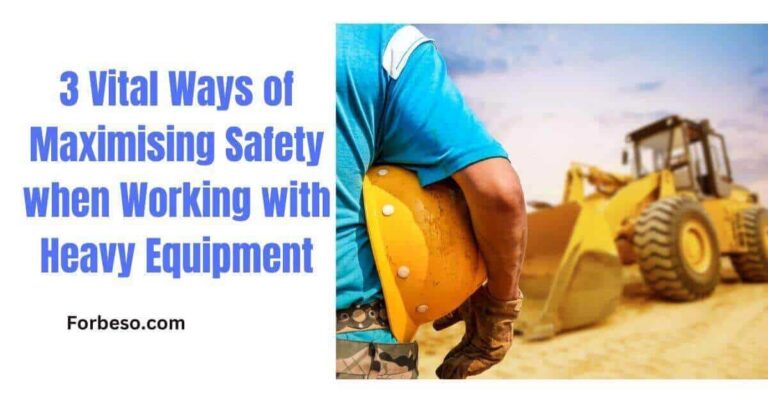Many jobs around the world – especially laborious ones – have an array of safety hazards. With this world expanding, and cities growing, working with heavy machinery and vehicles have become common. More specifically, the construction industry deals with heavy workloads all day long. Read on as we discuss some of the precautions you need to set Safety when Working with Heavy Equipment for your team.
Whether you’re operating a heavy vehicle, working with a machine, or driving heavy vehicles, you always need to be careful of the health and safety risks involved. When it comes to transport, workers are tasked to carry and maneuver large amounts of heavy items all the time. This is why, with services including trailer hire Melbourne workers have found quicker and more efficient ways to transport heavy goods in a big city.
No matter the setup, always have the right precautions in place before dealing with heavy equipment. This is vital, not only for you, but also for those around you.
Be Fully Trained
It is no secret that if you or your staff aren’t trained properly then your own and their safety would be jeopardised. If anyone has the necessary skills and knowledge to operate heavy machinery, or to transport heavy items, then that experience will minimise the danger.
An unskilled worker – and even an inexperienced one – won’t be aware of a machine or vehicle’s limitations when operating them. With regards to transporting and delivering heavy items, they may exceed weight masses when placing them on nose trolleys or other heavy-lifting trolleys.
These actions would not only damage other equipment, but it could damage your transported machinery, should it tip over and fall. It could also pose serious safety risks to people since the sudden movement of these heavy items can injure individuals nearby.
There may be warning signs of these hazards on any piece of equipment. Unfortunately, if you’re not trained well enough then it can be easy to miss the warning labels or unintentionally ignore them. Workers that are trained properly know to be aware of the machine’s limitations.
Being trained properly would also allow you to operate machines and vehicles safely, while staying fully aware of your surroundings. This further reduces the risk to everyone on site.
Be Aware of Transport Risks
As mentioned above, your workers need to be mindful of the potential risks heavy loads can have when moving them around a premises. However, transporting them elsewhere can have other dangers. When transporting heavy items, the loads need to be well-balanced and stored or packaged symmetrically and evenly.
Your items need to place between the wheels and tied down properly to prevent tipping and moving. If heavy items on your vehicle move too much it could also cause your vehicle to sway, which could make you lose control of it.
Overloading your vehicles is also a huge risk on the road. Again, you need to be aware of all the limitations.
Additionally, drivers and handlers of these loads should properly plan their routes before departing. Certain roads with narrow passes, bridges, congested areas, and streets that are being worked on. It should be avoided to minimise danger. Roads that are in poor condition should also not form part of the planned route.
Whether you’re using furniture trailer hire Melbourne companies book, or putting the equipment on a truck, always carefully plan your route, keeping the above in mind. It would help if you knew the areas well enough to avoid certain risks. If you don’t, ask around or drive the route by yourself once before taking the equipment through.
Always Wear Your PPE
Personal protective equipment (PPE) design to keep you safe in the work environment. Therefore, it’s obvious that you should never forget to always wear them when working in hazardous conditions. Helmets, goggles, and safety gear can go a long way in protecting you in the event of an accident.
Dangers such as excessive noise, dust or heat are worth keeping in mind and you can identify PPE solutions for it. But it’s not always a priority on a work site. Equipment, such as gloves, harnesses, helmets and even breathing apparatuses are top priority though. Thicker and fuller clothing can also be beneficial, to protect your body against cuts, scrapes and bruising.
Your clothing needs to also be highly visible, so that other operators can clearly see you—and you them. Just like you need to avoid obstacles, you also need to avoid your co-workers. If everyone wears high-visibility clothing, you’re lowering the risk of accidents! So, wearing that bright jacket should be mandatory.
Final Thoughts
Overall, when being appointed to work with heavy machinery, you need to identify the potential risks they can pose. You can never eliminate the risks entirely, but you can take the necessary precautions to reduce and manage them.
Inspecting and maintaining your equipment also goes a long way in regulating safety hazards. It still rings true: Better safe than sorry!
